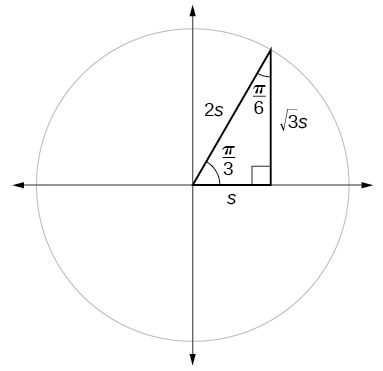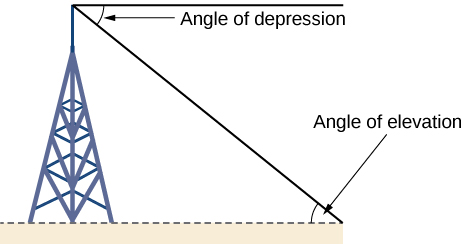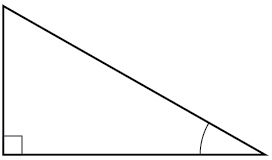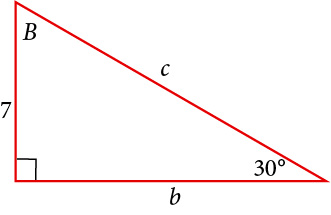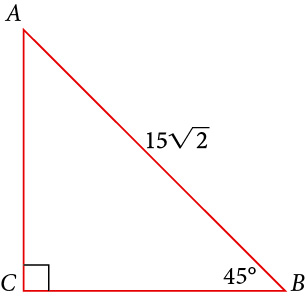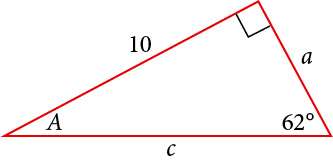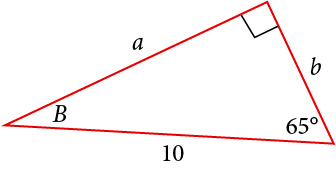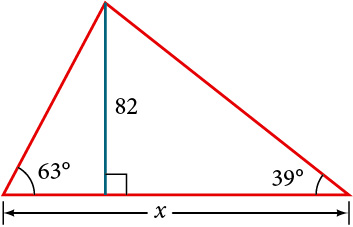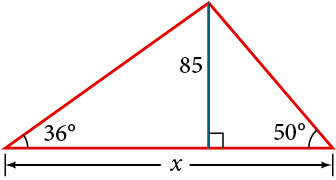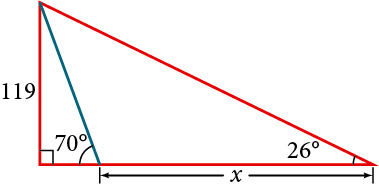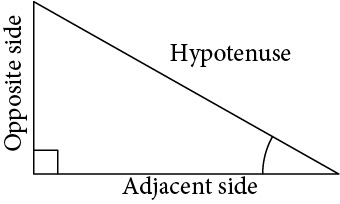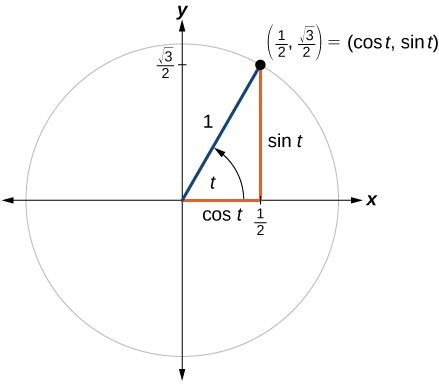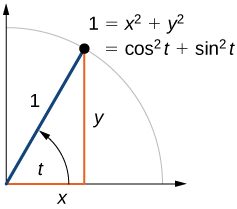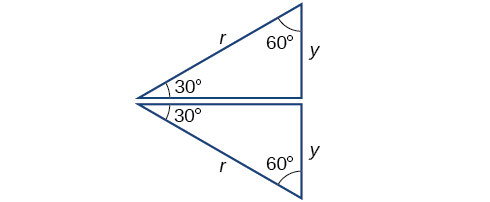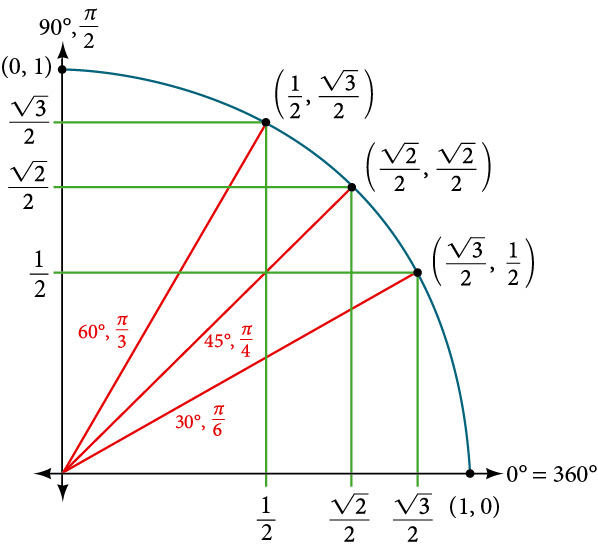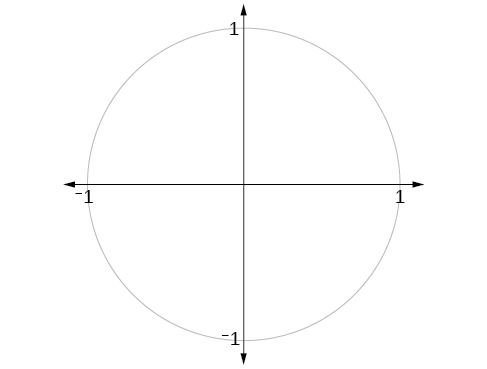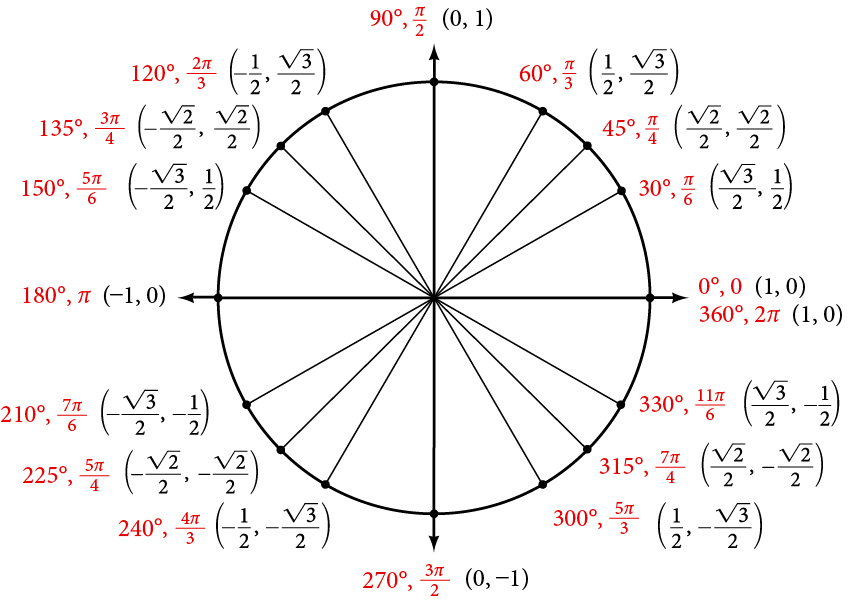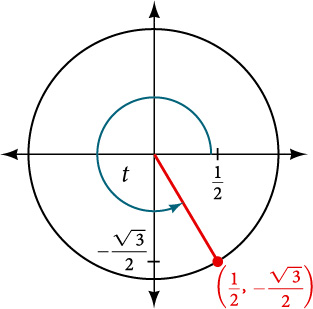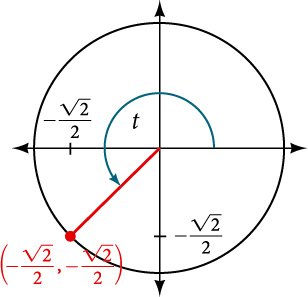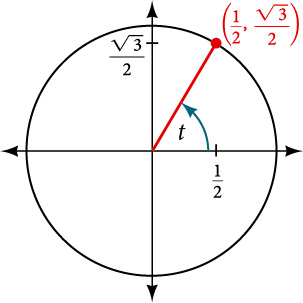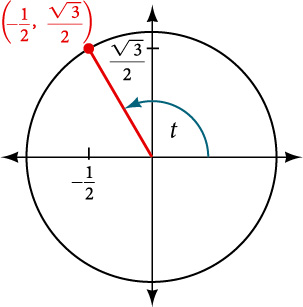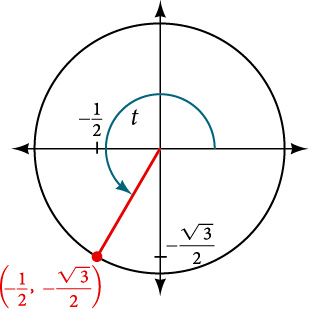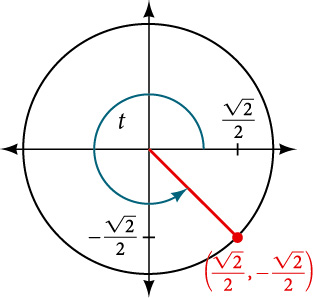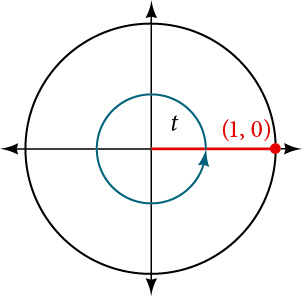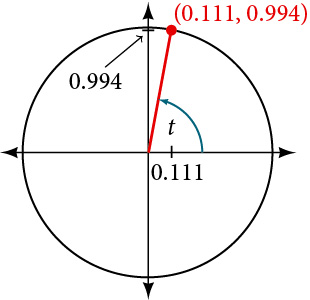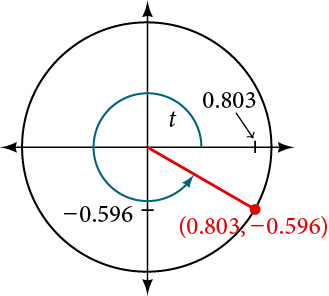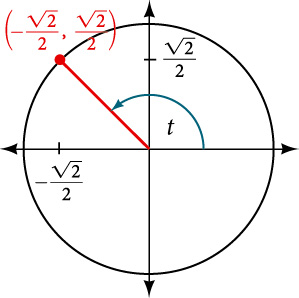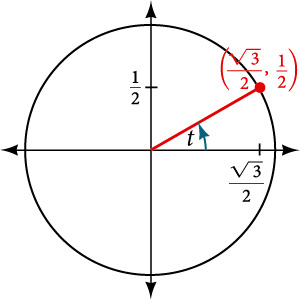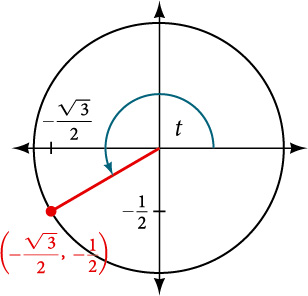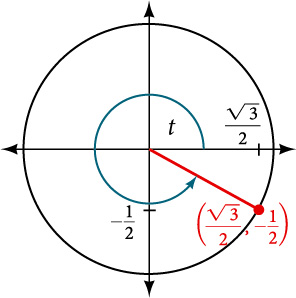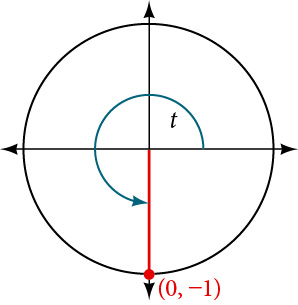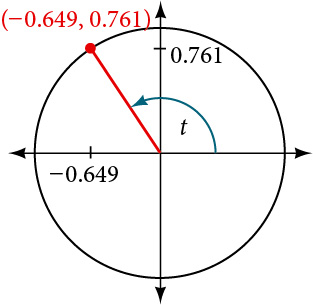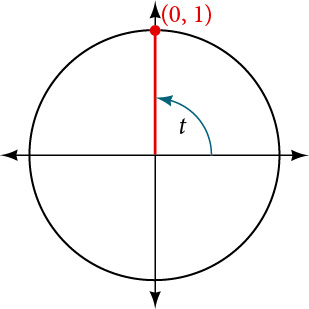Learning Objectives
In this section you will:
- Use right triangles to evaluate trigonometric functions.
- Find function values for[latex]\,30°\left(\frac{\pi }{6}\right),45°\left(\frac{\pi }{4}\right),[/latex] and [latex]\,60°\left(\frac{\pi }{3}\right).[/latex]
- Use equal cofunctions of complementary angles.
- Use the definitions of trigonometric functions of any angle.
- Use right-triangle trigonometry to solve applied problems.
Let's Get Started...
Mt. Everest, which straddles the border between China and Nepal, is the tallest mountain in the world. Measuring its height is no easy task. In fact, the actual measurement has been a source of controversy for hundreds of years. The measurement process involves the use of triangles and a branch of mathematics known as trigonometry. In this section, we will define a new group of functions known as trigonometric functions, and find out how they can be used to measure heights, such as those of the tallest mountains.
Using Right Triangles to Evaluate Trigonometric Functions
Figure 1 shows a right triangle with a vertical side of length[latex]\,y[/latex] and a horizontal side has length[latex]\,x[/latex]. Notice that the triangle is inscribed in a circle of radius 1. Such a circle, with a center at the origin and a radius of 1, is known as a unit circle.

We can define the trigonometric functions in terms an angle[latex]\,t[/latex] and the lengths of the sides of the triangle. The adjacent side,[latex]\,x[/latex], is the side closest to the angle. (Adjacent means “next to.”) The opposite side,[latex]\,y[/latex], is the side across from the angle. The hypotenuse, of length 1, is the side of the triangle opposite the right angle. These sides are labeled in Figure 2.

Given a right triangle with an acute angle of[latex]\,t[/latex], the first three trigonometric functions are listed.
[latex]\begin{array}{cccc}\phantom{\rule{2.5em}{0ex}}\text{Sine}\hfill & \phantom{\rule{1em}{0ex}}\text{sin}\left(t\right)\hfill & = &\frac{\text{opposite}}{\text{hypotenuse}}\hfill \end{array}[/latex]
[latex]\begin{array}{cccc}\phantom{\rule{1.5em}{0ex}}\text{Cosine}\hfill & \phantom{\rule{1em}{0ex}}\text{cos}\left(t\right)\hfill & = &\frac{\text{adjacent}}{\text{hypotenuse}}\hfill \end{array}[/latex]
[latex]\begin{array}{cccc}\hfill \text{Tangent}& \phantom{\rule{1em}{0ex}}\text{tan}\left(t\right)\hfill & = & \frac{\text{opposite}}{\text{adjacent}}\hfill \end{array}[/latex]
A common mnemonic for remembering these relationships is SohCahToa, formed from the first letters of “Sine is opposite over hypotenuse, Cosine is adjacent over hypotenuse, Tangent is opposite over adjacent.”
For the triangle shown in Figure 1, we have the following.
[latex]\begin{array}{ccc} \text{sin}\left(t\right) & = & \frac{y}{1} \\ \text{cos}\left(t\right) & = & \frac{x}{1} \\ \text{tan}\left(t\right) & = & \frac{y}{x} \end{array}[/latex]
How To
Given the side lengths of a right triangle and one of the acute angles, find the sine, cosine, and tangent of that angle.
- Find the sine as the ratio of the opposite side to the hypotenuse.
- Find the cosine as the ratio of the adjacent side to the hypotenuse.
- Find the tangent as the ratio of the opposite side to the adjacent side.
EXAMPLE 1
Evaluating a Trigonometric Function of a Right Triangle
Given the triangle shown in Figure 3, find the value of[latex]\,\mathrm{cos}\,\left(\alpha\right) .[/latex]

Show/Hide Solution
 Solution
Solution
The side adjacent to the angle is 15, and the hypotenuse of the triangle is 17.
[latex]\begin{array} {ccc} {cos}\left(\alpha\right) & = & \frac{\text{adjacent}}{\text{hypotenuse}} \\ & = & \hfill \frac{15}{17} \hfill \end{array}[/latex]
 Try It #1
Try It #1
Given the triangle shown in Figure 4, find the value of[latex]\,\text{sin}\,\left(t\right).[/latex]

Reciprocal Functions
In addition to sine, cosine, and tangent, there are three more functions. These too are defined in terms of the sides of the triangle.
[latex]\begin{array}{cccc}\phantom{\rule{2em}{0ex}}\text{Secant}\hfill & \phantom{\rule{1em}{0ex}}\text{sec}\left(t\right)\hfill & = &\frac{\text{hypotenuse}}{\text{adjacent}}\hfill \end{array}[/latex]
[latex]\begin{array}{cccc}\hfill \phantom{\rule{1.3em}{0ex}}\text{Cosecant}& \hfill \phantom{\rule{1em}{0ex}}\text{csc}\left(t\right)& = &\frac{\text{hypotenuse}}{\text{opposite}}\hfill \end{array}[/latex]
[latex]\begin{array}{cccc}\hfill \text{Cotangent}& \phantom{\rule{1em}{0ex}}\text{cot}\left(t\right)& = & \frac{\text{adjacent}}{\text{opposite}}\hfill \end{array}[/latex]
Take another look at these definitions. These functions are the reciprocals of the first three functions
[latex]\begin{array}{cccccc}\hfill \text{sin}\left(t\right)& =& \frac{1}{\text{csc}\left(t\right)}\hfill & \hfill \phantom{\rule{2em}{0ex}}\text{csc}\left(t\right)& =& \frac{1}{\text{sin}\left(t\right)}\hfill \\ \hfill \text{cos}\left(t\right)& =& \frac{1}{\text{sec}\left(t\right)}\hfill & \hfill \phantom{\rule{2em}{0ex}}\text{sec}\left(t\right)& =& \frac{1}{\text{cos}\left(t\right)}\hfill \\ \hfill \text{tan}\left(t\right)& =& \frac{1}{\text{cot}\left(t\right)}\hfill & \hfill \phantom{\rule{2em}{0ex}}\text{cot}\left(t\right)& =& \frac{1}{\text{tan}\left(t\right)}\hfill \end{array}[/latex]
When working with right triangles, keep in mind that the same rules apply regardless of the orientation of the triangle. In fact, we can evaluate the six trigonometric functions of either of the two acute angles in the triangle in Figure 5. The side opposite one acute angle is the side adjacent to the other acute angle, and vice versa.

Many problems ask for all six trigonometric functions for a given angle in a triangle. A possible strategy to use is to find the sine, cosine, and tangent of the angles first. Then, find the other trigonometric functions easily using the reciprocals.
How To
Given the side lengths of a right triangle, evaluate the six trigonometric functions of one of the acute angles.
- If needed, draw the right triangle and label the angle provided.
- Identify the angle, the adjacent side, the side opposite the angle, and the hypotenuse of the right triangle.
- Find the required function:
- sine as the ratio of the opposite side to the hypotenuse
- cosine as the ratio of the adjacent side to the hypotenuse
- tangent as the ratio of the opposite side to the adjacent side
- secant as the ratio of the hypotenuse to the adjacent side
- cosecant as the ratio of the hypotenuse to the opposite side
- cotangent as the ratio of the adjacent side to the opposite side
EXAMPLE 2
Evaluating Trigonometric Functions of Angles Not in Standard Position
Using the triangle shown in Figure 6, evaluate[latex]\,\text{sin}\left(\alpha\right),\,\text{cos}\left(\alpha\right),\,\text{tan}\left(\alpha\right),\,\text{sec}\left(\alpha\right),\,\text{csc}\left(\alpha\right),\,\text{and}\,\text{cot}\left(\alpha\right).[/latex]

Show/Hide Solution
 Solution
Solution
[latex]\begin{array}{ccccc}\hfill \text{sin}\left(\alpha\right) & = &\frac{\text{opposite }\alpha }{\text{hypotenuse}}\hfill & = &\frac{4}{5}\hfill \\ \hfill \text{cos}\left(\alpha\right) & = &\frac{\text{adjacent to }\alpha }{\text{hypotenuse}}\hfill & =&\frac{3}{5}\hfill \\ \hfill \text{tan}\left(\alpha\right) & = &\frac{\text{opposite }\alpha }{\text{adjacent to }\alpha }\hfill & = &\frac{4}{3}\hfill \\ \hfill \text{sec}\left(\alpha\right) & = &\frac{\text{hypotenuse}}{\text{adjacent to }\alpha }\hfill & = & \frac{5}{3}\hfill \\ \hfill \text{csc}\left(\alpha\right) & = & \frac{\text{hypotenuse}}{\text{opposite }\alpha }\hfill & = & \frac{5}{4}\hfill \\ \hfill \text{cot}\left(\alpha\right) & = & \frac{\text{adjacent to }\alpha }{\text{opposite }\alpha }\hfill & = & \frac{3}{4}\hfill \end{array}[/latex]
 Analysis
Analysis
Another approach would have been to find sine, cosine, and tangent first. Then find their reciprocals to determine the other functions.


